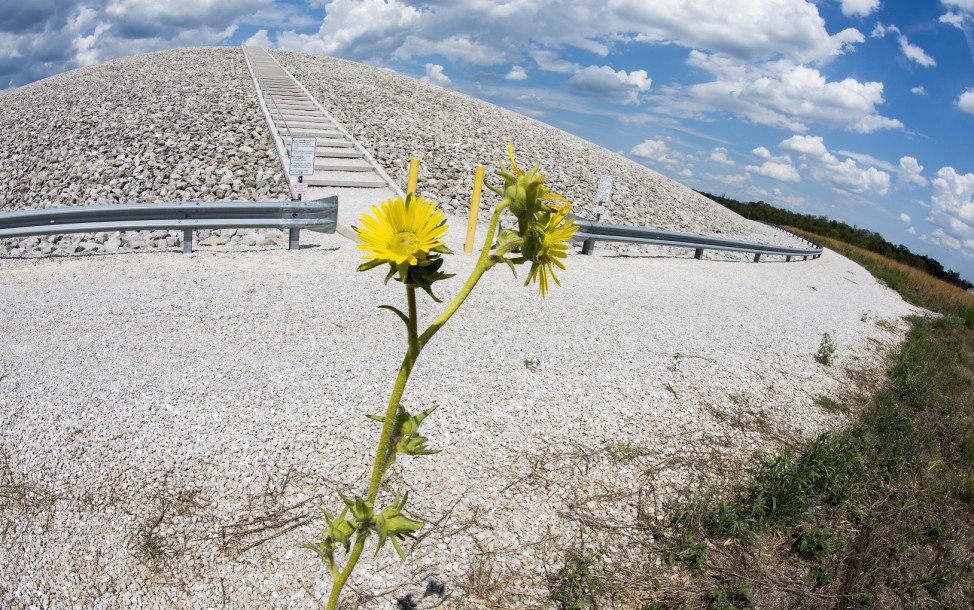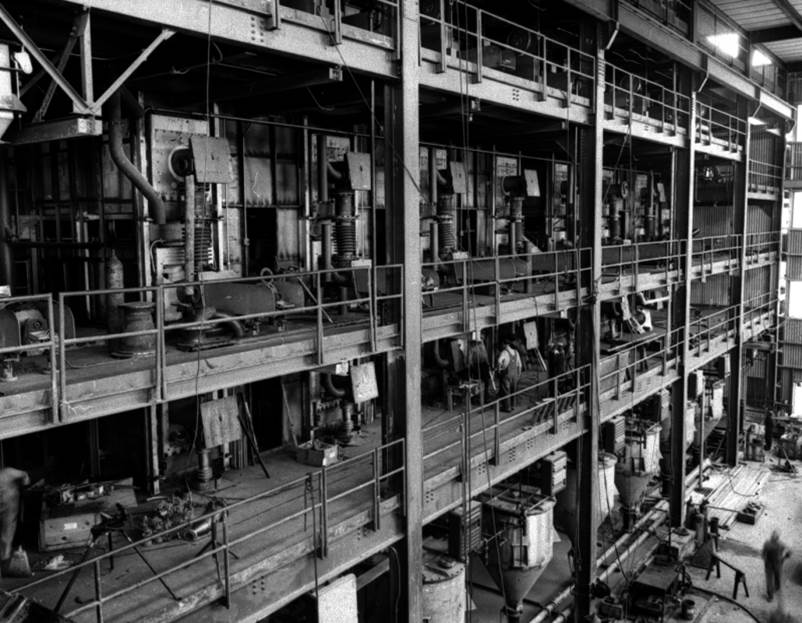
Tons of hazardous waste lie beneath this dome in Weldon Spring, Missouri, which draws 16,000 visitors each year. (Photo by Mark Schuver)
If the idea of standing on top of a mammoth pile of nuclear waste sounds appealing, then Weldon, Missouri, is the place for you.
The waste lies beneath a structure that resembles an enormous ancient burial tomb. There’s even a platform at the top of the 7-story-high mound where visitors can take in the view.
The American government refers to the area as the Weldon Spring site, but it’s also known as the Nuclear Waste Adventure Trail and Museum.
The largest explosives factory in the United States once stood in its place. By 1956, the property was occupied by 44 buildings that refined uranium for nuclear bombs. The plant was abandoned in the 1960s and the U.S. Environmental Protection Agency (EPA) showed up 20 years later to conduct the clean-up.
The EPA found 1.48 million cubic yards of toxic waste, including radiologically and chemically contaminated structural materials, sludge, and soils. Environmental contaminants included uranium, radium, TNT and heavy metals. Instead of hauling it all away, the U.S. government decided to entomb the contaminated waste right there.

Inside the uranium plant. Pretty much all of the structures and equipment seen here are now entombed in the massive disposal cell that thousands of tourists climb each year. (US Dept. of Energy)
“The disposal cell is kind of like a bowl that was constructed on the ground surface, nothing is below surface,” said Yvonne Deyo, one of the site managers. “The bowl was filled with contaminated materials and then a cover was placed on the bowl.”
The plant buildings were reduced to rubble to be placed inside the cell. Contaminated soil takes up approximately 80 percent of the containment bowl. The rest of the waste is made up of what’s left of the buildings, including their foundations, piping, and the sewer system.
“None of the items were shipped off-site,” said environmental engineer Terri Uhlmeyer. “Everything went into the cell.”
The 45-acre cell, made of stone, concrete and clay, covers the area that was occupied by the chemical plant buildings. Deyo says the cap of the containment bowl is more than 8 feet thick.
The cell was designed to last 1000 years and is inspected annually to make sure that its integrity is intact. There are also a series of groundwater wells surrounding the Weldon Spring site that are monitored for contaminants.
In 2002, the radiation levels were deemed low enough for the site to be opened to the public.
Today tourists can climb the man-made mountain using stairs that lead to the summit. There’s also a 6-mile-long adventure trail. And what was once the radioactive worker detection check point is now an interpretive center that’s open to visitors.
The officials who run the place say the 16,000 people who visit each year rarely express concerns about their health and safety.
“An extensive cleanup was done,” said Ken Starr, the U.S. Department of Energy’s Weldon Spring site manager. “The area was cleaned to residential standards.”
That assurance is good enough for the parents of hundreds of children who visit Weldon Spring on school field trips each year.
“There’s a big interest; the slots for field trips book up months in advance,” said Deyo, the site manager. “Think about the environmental education component. It’s hands on. It’s definitely a unique field trip destination for the sciences and that’s what teachers have recognized and that’s why it’s popular.”
The area surrounding the containment bowl is also popular with cyclists and hikers, and it’s not unusual to see local residents walking their dogs in the area.
The Department of Energy wanted to restore the surrounding area to its natural state, so haul roads were converted to hike and bike trails. The process of building a prairie to revegetate the site began in 2002.
Today the adventurous can hike or bike the nearby Hamburg Trail through the site, taking time to climb to the top of the waste mountain to view the prairie in bloom.
Special thanks to Mark Schuver for granting us permission to use his photographs of the Weldon Spring site.






















What kind of nut case gov would build and then contain a uranium plant on top of a water supply. HULLO IS THERE ANY ONE HOME?
This nuclear waste adventure trail is essentially a monument to the stupidity of the human race.
excuse me you left the door open in your rush to leave – forget disneyland lets go to nuclear wasteland
i consume & inhale uranium ore,thorium 237,& delicious americium 241.
this sounds like a trap to me